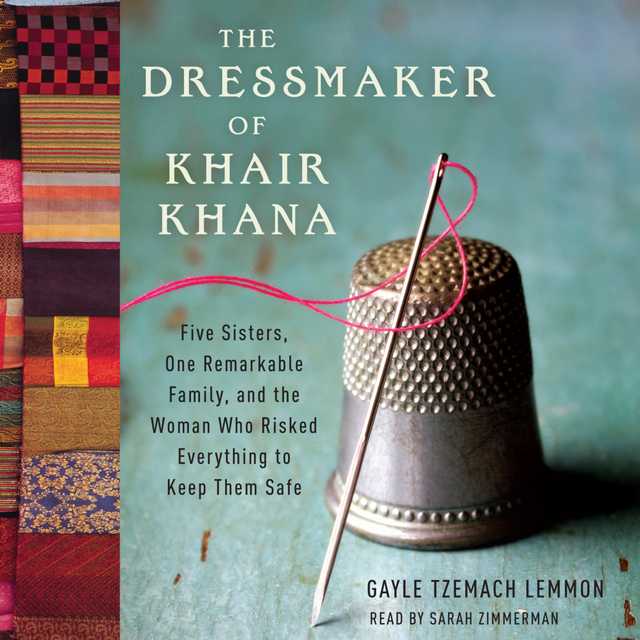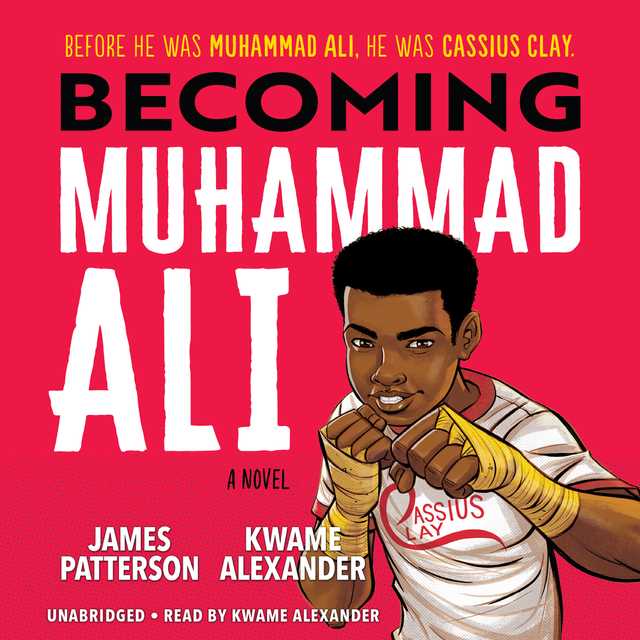The Dressmaker of Khair Khana Audiobook Summary
“We’re far more accustomed to–and comfortable with–seeing women portrayed as victims of war who deserve our sympathy rather than as resilient survivors who demand our respect…”
Former ABC journalist Gayle Tzemach Lemmon tells the riveting true story of Kamila Sidiqi and other women of Afghanistan in the wake of the Taliban’s fearful rise to power. In what Greg Mortenson, author of Three Cups of Tea, calls “one of the most inspiring books I have ever read,” Lemmon recounts with novelistic vividness the true story of a fearless young woman who not only reinvented herself as an entrepreneur to save her family but, in the face of ferocious opposition, brought hope to the lives of dozens of women in war-torn Kabul.
Other Top Audiobooks
The Dressmaker of Khair Khana Audiobook Narrator
Sarah Zimmerman is the narrator of The Dressmaker of Khair Khana audiobook that was written by Gayle Tzemach Lemmon
Gayle Tzemach Lemmon is a Senior Fellow at the Council on Foreign Relations and a contributor to Atlantic Media’s Defense One, writing on national security and foreign policy issues. She is the bestselling author of The Dressmaker of Khair Khana and has written for Newsweek, the Financial Times, International Herald Tribune, Christian Science Monitor, CNN.com, and the Daily Beast, as well as for the World Bank and Harvard Business School.
About the Author(s) of The Dressmaker of Khair Khana
Gayle Tzemach Lemmon is the author of The Dressmaker of Khair Khana
More From the Same
- Author : Gayle Tzemach Lemmon
- Ashley’s War
- The Daughters of Kobani
- Publisher : HarperAudio
- Abraham
- American Gods [TV Tie-In]
- Dead Ringer
- House of Sand and Fog
- Prey
The Dressmaker of Khair Khana Full Details
| Narrator | Sarah Zimmerman |
| Length | 6 hours 16 minutes |
| Author | Gayle Tzemach Lemmon |
| Category | |
| Publisher | HarperAudio |
| Release date | March 15, 2011 |
| ISBN | 9780062027450 |
Subjects
The publisher of the The Dressmaker of Khair Khana is HarperAudio. includes the following subjects: The BISAC Subject Code is Business & Economics, Entrepreneurship
Additional info
The publisher of the The Dressmaker of Khair Khana is HarperAudio. The imprint is HarperAudio. It is supplied by HarperAudio. The ISBN-13 is 9780062027450.
Global Availability
This book is only available in the United States.
Goodreads Reviews
Will
February 10, 2021
Gale Tzemach Lemmon offers us a profile in courage about a young woman who defied the daunting odds in Taliban-controlled Kabul to established a business that offered employment, income and hope to her family and neighbors, at a time when all three were in very short supply.One of the many awful aspects of the extreme form of Islam practiced by the Afghan Taliban is their complete subjugation of women. Women are not allowed to leave their homes unless accompanied by a male relative. They are not allowed to work outside the home. When in public, women must at all times wear the head-to-toe-covering burkah, also known as a chadri. The list of forbiddens goes on like a list of biblical begats, and shifts with the moods of local commanders. When the Taliban took over control of most of Afghanistan in 1996, they made their version of Sharia the law of the land, and a dark age (or a darker age, anyway, as it had not been a frolicsome garden spot before) fell over the land. However, even in the darkest of times, there are always some points of light. Kamela Sediqi was one shining example. Gayle Tzemach Lemmon - image from M.M. LafleurSediqi and her family were Tajiks, the second largest ethnic group in the country. The Taliban are Pashtun, the largest. Remaining resistance to Taliban rule was centered north of Kabul among groups of largely Tajik ethnicity. Believing that all ethnic Tajiks were thus suspect, the Taliban engaged in a widespread campaign of oppression, particularly against Tajik males. Sediqi’s father, even with over thirty years in the Afghanistan military, knew that his service was of less significance to the Taliban than his Tajik ancestry. He fled to the north, placing leadership of the family in the hands of the young Kamela, a recent graduate of the Kabul Teacher Training academy. As new head of her family, Kamela struggled to find some way for the family to earn income. The education system was in tatters, particularly for women, so teaching was not an option. Although she had no experience with tailoring, she recognized that there was an unmet need and, with the assistance of her expert-seamstress sister, Malekheh, and her many other sisters, she began a small business sewing clothing for sale by local tailors. Soon demand for her family’s products exceeded the family’s ability to produce them, so Kamela began taking on trustworthy neighbors. Everyone who worked at her home was thrilled to have any work at all, given how difficult it was for women to work in this males-only world. Still, Kamela had to contend with the ever-present threat of beating and/or arrest by roaming groups of sharia enforcers. Lemmon tells how the business thrived and kept growing during the trying time of Taliban control. After their removal from power in 2001, her business boomed, branching off into various other directions. Kamela’s little sewing shop had become a considerable concern. She was also recruited by the NGOs that had returned to Kabul, to try to find ways to use her expertise to educate a new generation of entrepreneurial women.Lemmon does an excellent job of keeping herself out of the story, recreating Kamela’s tale from 1996 to the present, but mostly until the 2001 US retaliation for 9/11. It reads very quickly. She communicates quite well the sense of ubiquitous danger and fear that permeated the country. One of the great concerns present today is that the Taliban will return to some measure of power, and women’s hard-fought gains will be lost. It is not an idle concern.There are many stories to be told about Afghanistan and the Taliban. Lemmon’s tale is very revealing, about what is possible with intelligence, craft and determination, even when faced with overwhelming opposition. Kamela’s small business triumph is a pretty big deal, showing one way in which elements of the devastated Afghan economy can rebuild. However, it is not the only deal. I found that Lemmon’s business-centric view of the world may have caused her to overlook some things. Lest one believe that this is a story of a poor girl making good, Kamela did not come from a poor family. In the very beginning we are introduced to her as a teaching institute graduate, which speaks of the availability of resources beyond the norm in this poor country. That the family had a spare apartment that they rented to a doctor for income indicates more of the same. Surely, her father’s decades of service in the national army contributed to that. While the family may not have been wealthy by American standards, they were pretty well off by Kabul standards. This takes nothing away from Kamela’s bravery or accomplishment. We work with what we have. But the significance is in what one extrapolates from the experience. I get the impression that Lemmon sees entrepreneurship in almost religious terms. If only we would let people make businesses everything would be fabulous. The educational and financial opportunities Kamela enjoyed were not available to many women. She had a leg up. Which is ok, unless one seeks to use the example of Kamela as the sole model for how to rebuild. Then it becomes dishonest. Kamela is a remarkable individual. Well if she could do it, why can’t you? And that is how I fear this book might be used, as a means of promoting a particular ideology. Entrepreneurship can be hugely creative and productive but it is not the only tool in the toolbox. Public and NGO programs have a significant place in economic reconstruction, whether the scarred surface is Kabul or Brownsville.The Dressmaker of Khair Khana is a readable, interesting look at one aspect of life under Taliban tyranny, and any such effort that fuels hope for a better future is most welcome.============================EXTRA STUFFLinks to the author’s personal, Twitter and FB pages
Melinda
July 11, 2016
Wow. Just finished this book and am still processing the tale, the truths, the atrocities and their implications. A true story of a family of (mostly) women, and the changes they faced when the Taliban came into power in Afghanistan. This story is extremely powerful and eye-opening ...giving the reader a glimpse into life for women in this turbulent and brutal time. A government change that forced women into near house-arrest, took away personal liberties and education, and the ability to earn a living. I did feel at times that the book "glossed" over the events, realities and hardships experienced by these women and their families. I felt like we were only hearing how much this family accomplished and how much good they did in their community rather than how difficult and perilous this journey was for them. And in saying that I'm not suggesting this book or the family were bragging - more that the author focused primarily on the positives rather than delving into the Taliban underbelly. And that's not a bad thing.It was also refreshing to read a book about women and their achievements. It was lovely to hear about success and joy in a place where all we seem to see and hear in the media is hardship and brutality.The style of writing is simplistic, an easy read, not too deep or confusing. I liked the way this book forced you to think about the issues, and put yourself in their shoes - imagine how I would react if the Taliban (or other) came to my home and changed everything about the way I lived, worked, dressed. Imagine how I would survive, help my family when all the doors seemed closed. Deep respect for these women of Kabul and thankful to author for bearing witness and sharing their story.
Idoia
June 29, 2021
Historia real que me ha encantado. Siempre me ha gustado esta temática de testimonios de mujer, que tienen que luchar por sobrevivir, y arriesgar muchas veces aún a costa de poder perder su vida. Me ha encantado el carácter de la protagonista, luchadora, nada egoísta, tierna, servicial....9/10
Sherry
May 26, 2019
This was the true story of Kamila, her sisters and brothers, and how they kept their family going during the terrible years after the Taliban took control of Kabul. Her father had been an army officer under a previous regime, and although long retired, he had to go into hiding. Kamila’s mom joined him, leaving Kamila to look after the family, even though she was a teenager. Kamila has just graduated from Teacher’s College but longed to continue her education. She could not b/c the Taliban outlawed women from leaving their houses w/o a male escort. She hatched up a scheme to learn how to sew and provide dresses to local tailors. This seems harebrained, in that her older sister was the seamstress in the family. Anyway, older sister shows her how to sew, bead, and embroider, and soon the whole family is working. Then they have to bring in other women, all while avoiding the suspicious Taliban.The story ends as happily as it can in current Afghanistan. Kamila goes to work for a UN agency where she is helping train other Afghani women in entrepreneurship.I see in some of the reviews that some readers believe the story isn’t all true. I’m not positive what makes them suspicious, but I personally find it hard to believe that Kamila could go from a total novice seamstress to creating tailored products at first try. I’ve been sewing for years, w/ a machine—which she didn’t always have—so that sounds difficult to me. Anyway, I think it is important to understand what our sisters living under sharia law have to go through, so that we continue the struggle for women’s rights around the world.
Eric
June 24, 2012
I rarely read a book that creates such an impression that I continue to carry with me the vivid pictures for months, years. This book is one such and it is true. It is an absolutely inspiring story of human triumph against difficulties that leave me with my jaw hanging open. Kamila Sidiqi's life was changed overnight when the Taliban took over Afghanistan. Her parents and a brother had to flee. She was left as the sole breadwinner for her four sisters and one young brother. What could she do, confined as a woman to her home compound, able to go abroad only with her young brother at times that would not conflict with Taliban patrols?Kamila demonstrated incredible grit, determination and ingenuity. Through learning to sew and teaching others, she established a dressmaking concern that brought in what they needed to live...but not only her family but many others. Kamila became an marvelous entrepreneur ultimately tapped by the UN to help in their concerns.The story, though true, reads like a suspenseful thriller. One never knows when the Taliban will discover their enterprise or arrest her for her bazaar jaunts to sell dresses. Everyone with concerns as broad as Afghanistan/Pakistan/Iraq or how to motivate people to self-reliance and entrepreneurship should read this and rejoice.
Jennifer
August 02, 2014
I am writing about this book not because I loved it (I liked it enough, but I loved the topic), but because it's an important book. Just like Imperial life in Emerald City, this book should be read by as many people as possible (should be required reading in the diplomatic corps).Kamila Sidiqi comes from a family of eleven children. She is the third oldest, with an older sister and brother. Having blessed with an educated father who believed in education for all his children, she had big dreams. She hoped to become a professor in Dari or literature one day. All this suddenly came to an end when Taliban seized control of Afghanistan. Almost immediately, brutal laws were instituted and enforced. Some of them are as follows: "Accused thieves had one hand and one foot cut off, and their severed limbs hung from posts on street corners as a warning to others." Everything that they consider a distraction from worship was banned - such as music, movies, television, card playing, chess, and kite flying. Creating a representation of the human figure was forbidden. Wearing western clothing or hair cut was forbidden. After a short grace period, the length of men's beard must meet Taliban's requirement of longer than a fist length. Shaving was forbidden. Modernity or anything associated with it was banned. Women will stay at home. Women are not permitted to work. Women must wear the chadri in public. Women must travel with a male family chaperone. Women cannot speak to men they are not related to. Women were banned from schools, offices, etc.Women were beaten on the streets if they didn't wear chadri (a face covering that left 2 inches by 3 1/2 inches opening for the eyes), if they were out and about alone without a male family chaperone, if their wrist peeked out, if they were caught talking to a male that wasn't their relative, etc. Kamila's family didn't have to worry about money, initially. Her father had made wise investments, and they were able to make it. However, as time passed and the adult males of the family (Kamila's father and older brother) were forced to leave their home due to Taliban threats, and the household finances were more and more difficult to meet. As desperation grew, Kamila talked her oldest and married sister, Malika, into teaching her how to sew. Though Malika had a university degree and had been a teacher previously, she was now helping her husband make ends meet with her sewing.Kamila noticed that even under Taliban rule, some women run businesses did well (such as female doctors treating female patients) as long as they heeded no contact with males rule. Kamila decided that they could start sewing clothes to sell at various markets nearby. The only danger lay in Kamila having to talk to the shopkeepers (mostly men) about her wares. In the beginning, Kamila and her sisters only sold a handful of pieces, but soon, the word spread about her work ethic, craftsmanship, quality of clothes, etc. brought in more and more work. And Kamila's enterprise spread from mouth-to-mouth and more and more desperate women came to Kamila's house to beg for work.The remarkable thing about Kamila is that she didn't turn anyone away. In fact, she created sewing school to take in as many women and girls as possible and to train them. Her business grew and she was able to give desperate women a chance to contribute and help their desperate families.Kamila's secret to success was that she knew the dangers and she adhere to most of Taliban's rules. This was a recipe to her success. She dealt with most women. She didn't "educate" the girls, but taught them sewing, which would serve the girls well as adults in helping out their families. Even some Taliban soldiers and commanders sent their daughters to Kamila's sewing school and ordered wedding dresses and others from her. So, she kept the big rules, but she broke what she considered less severe ones - like talking to males not related to her.Though she minimized the risks of her sisters and those who worked for her, she took great personal risks - she went to the markets to negotiate, sometimes every day, and she later went on to work for a UN agency against her family's wishes. Through it all, she held her family together, she provided for hundreds of people, and she made a difference in lives of others.What I've learned from this books is that under most draconian rule, we are resilient enough to find ways not only to survive, but thrive. Then I wondered if there were any Kamila Sidiqi's in North Korea, in Syria, in Gaza, etc. and I wondered if there'd be anyone there to write their stories.
Divya
September 27, 2016
Brilliant read - takes you through life in the times of Taliban, through the life of one family. This book reads like fiction, but is a true account of how Kamila and her sisters built their business out of the necessities that arose from the rules of the regime. From learning to sew to building a school cum tailoring establishment, Kamila ensures the income and safety of her family through her stubborn resolve.
Nancy
February 03, 2012
We have come to view the women of Afghanistan as oppressed victims of the Taliban -- which they are -- but they are not just that, writes Gayle Tzemach Lemmon. They are heroes who under the harshest of circumstances have carved out a niche for themselves as entrepreneurs and activists. They have no choice, if they and their families are going to survive.Until I read this story of Kamela, a young woman struggling to stay alive in Taliban-occupied Kabul, I had no idea of what that oppression meant. I knew that women were denied an education and forced to cover themselves entirely. But I could never have extrapolated how cruelly their lives were shut down. Gangs of "morality police" roam the streets, beating any woman whose covering reveals a stray hair, or who has lifted her chadri for a second so she can see what she's buying at the market. Women are unable to work, to go out without a male family member, or talk with anyone when they do venture out. It is risky business to walk down a street, and they cannot recognize even a friend, covered as they are from head to toe. Women are essentially cut off from society and put under house arrest.Kamela can't bear this enforced captivity. First, she and her sisters figure out how to swap books with friends to ease their boredom. Then, she sets in motion a plan to become a seamstress, since her plan to teach has come to an end. It doesn't matter that she has never sewed! She is determined to learn; otherwise, her family will starve. Her father and brother have been forced to flee the country, as most men have in order to escape impressment or death, leaving her and her sisters without an income.Having failed miserably at sewing myself, I am astounded at how quickly Kamela and her sisters learn to make beautiful garments adorned with intricate beading and embroidery. Kamela is a natural businesswoman, and soon she is quietly finding shopkeepers to buy her clothing and teaching other desperate women the trade. Eventually, after Taliban rule has come to an end, she catches the eye of Westerners who recognize the value of women like her to act as catalysts for change."Brave young women complete heroic acts every day, with no one bearing witness," the author writes. In this elegant book, Ms. Lemmon brings to light the story of one singular hero, a dressmaker who risks everything -- even her life -- to reclaim not only her place in society, but her very soul.
Lisa
April 21, 2013
In the 1990's the women of Afghanistan were experiencing the freedom to pursue an education and a career until the Taliban seized control of Kabul. The Muslim extremists required women to stay home, and not to hold a job or attend school. If a woman had to leave her home, she had to be covered completely and be accompanied by a male relative. Any woman out of her home not complying with this demand would be beaten or imprisoned.This is a photo taken in Khair Khana, so you see what covered means: The town of Khair Khana: Kamila Sidigi had just received a teaching degree, but as a woman, she was banned from school and was told to stay home. Kamila and her sisters find some escape through books, but soon tire of the same books. Due to the bad economy and because Kamila's father and brother had to flee before they were forced into the Taliban army, the Sidigi's have little money to buy the necessities of life. Kamila and her sisters long to work, but are not allowed. Kamila comes up with an idea to make dresses in her home to sell. Undeterred by the fact that she does not know how to sew, Kamila enlists the help of her sisters and her youngest brother who is too young to be forced into military service for the Taliban.Kamila is on the right: The book was compelling. I listened to the audiobook while spreading mulch for hours; I felt like I was right there with Kamila and her sisters. Kamila's desire to make something of her life, and to help others to do the same is inspiring.A bit of a spoiler; you can see Kamila takes the lead in encouraging women:
Nancy
July 04, 2015
If you are interested in people of other cultures, and the struggles they have to go through, you will love this book. A woman journalist went to Afghanistan to find woman, who were doing work from their homes. Kamila was a young woman, from a family of eleven children. Her education was disrupted by the Tailban's taking power. She decided to learn sewing from her older sister, in order to make money for her families survival. Kamila was able to earn money for her own family, and then hired other people to help. Next she started classes in her home, to teach other woman how to sew. It that way she helped others survive. She was often in danger, and needed to take her younger brother with her, to met the demands of the Tailban. This is a very interesting story, and I would recommend it highly.
Most Popular Audiobooks
Frequently asked questions
Listening to audiobooks not only easy, it is also very convenient. You can listen to audiobooks on almost every device. From your laptop to your smart phone or even a smart speaker like Apple HomePod or even Alexa. Here’s how you can get started listening to audiobooks.
- 1. Download your favorite audiobook app such as Speechify.
- 2. Sign up for an account.
- 3. Browse the library for the best audiobooks and select the first one for free
- 4. Download the audiobook file to your device
- 5. Open the Speechify audiobook app and select the audiobook you want to listen to.
- 6. Adjust the playback speed and other settings to your preference.
- 7. Press play and enjoy!
While you can listen to the bestsellers on almost any device, and preferences may vary, generally smart phones are offer the most convenience factor. You could be working out, grocery shopping, or even watching your dog in the dog park on a Saturday morning.
However, most audiobook apps work across multiple devices so you can pick up that riveting new Stephen King book you started at the dog park, back on your laptop when you get back home.
Speechify is one of the best apps for audiobooks. The pricing structure is the most competitive in the market and the app is easy to use. It features the best sellers and award winning authors. Listen to your favorite books or discover new ones and listen to real voice actors read to you. Getting started is easy, the first book is free.
Research showcasing the brain health benefits of reading on a regular basis is wide-ranging and undeniable. However, research comparing the benefits of reading vs listening is much more sparse. According to professor of psychology and author Dr. Kristen Willeumier, though, there is good reason to believe that the reading experience provided by audiobooks offers many of the same brain benefits as reading a physical book.
Audiobooks are recordings of books that are read aloud by a professional voice actor. The recordings are typically available for purchase and download in digital formats such as MP3, WMA, or AAC. They can also be streamed from online services like Speechify, Audible, AppleBooks, or Spotify.
You simply download the app onto your smart phone, create your account, and in Speechify, you can choose your first book, from our vast library of best-sellers and classics, to read for free.
Audiobooks, like real books can add up over time. Here’s where you can listen to audiobooks for free. Speechify let’s you read your first best seller for free. Apart from that, we have a vast selection of free audiobooks that you can enjoy. Get the same rich experience no matter if the book was free or not.
It depends. Yes, there are free audiobooks and paid audiobooks. Speechify offers a blend of both!
It varies. The easiest way depends on a few things. The app and service you use, which device, and platform. Speechify is the easiest way to listen to audiobooks. Downloading the app is quick. It is not a large app and does not eat up space on your iPhone or Android device.
Listening to audiobooks on your smart phone, with Speechify, is the easiest way to listen to audiobooks.






























